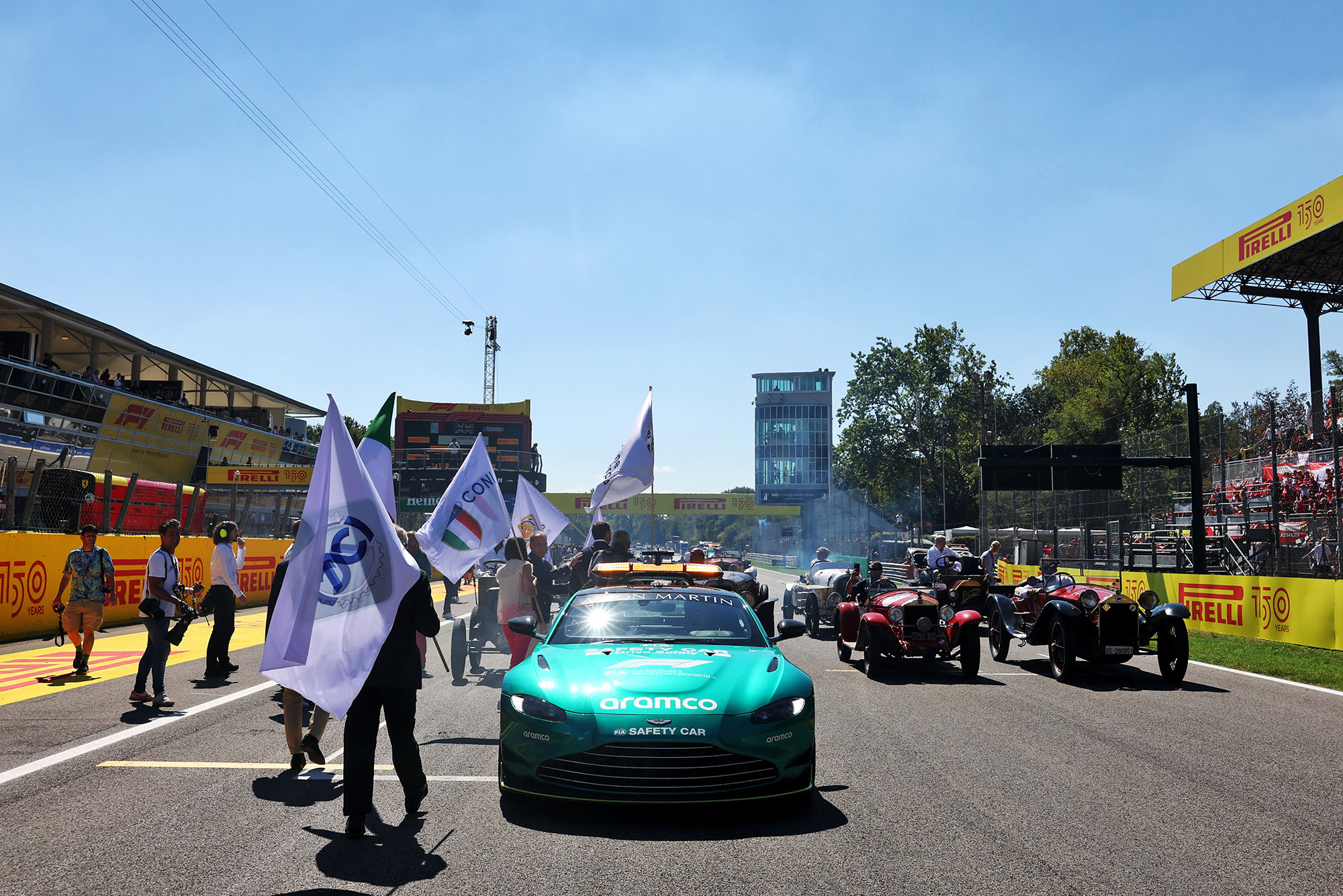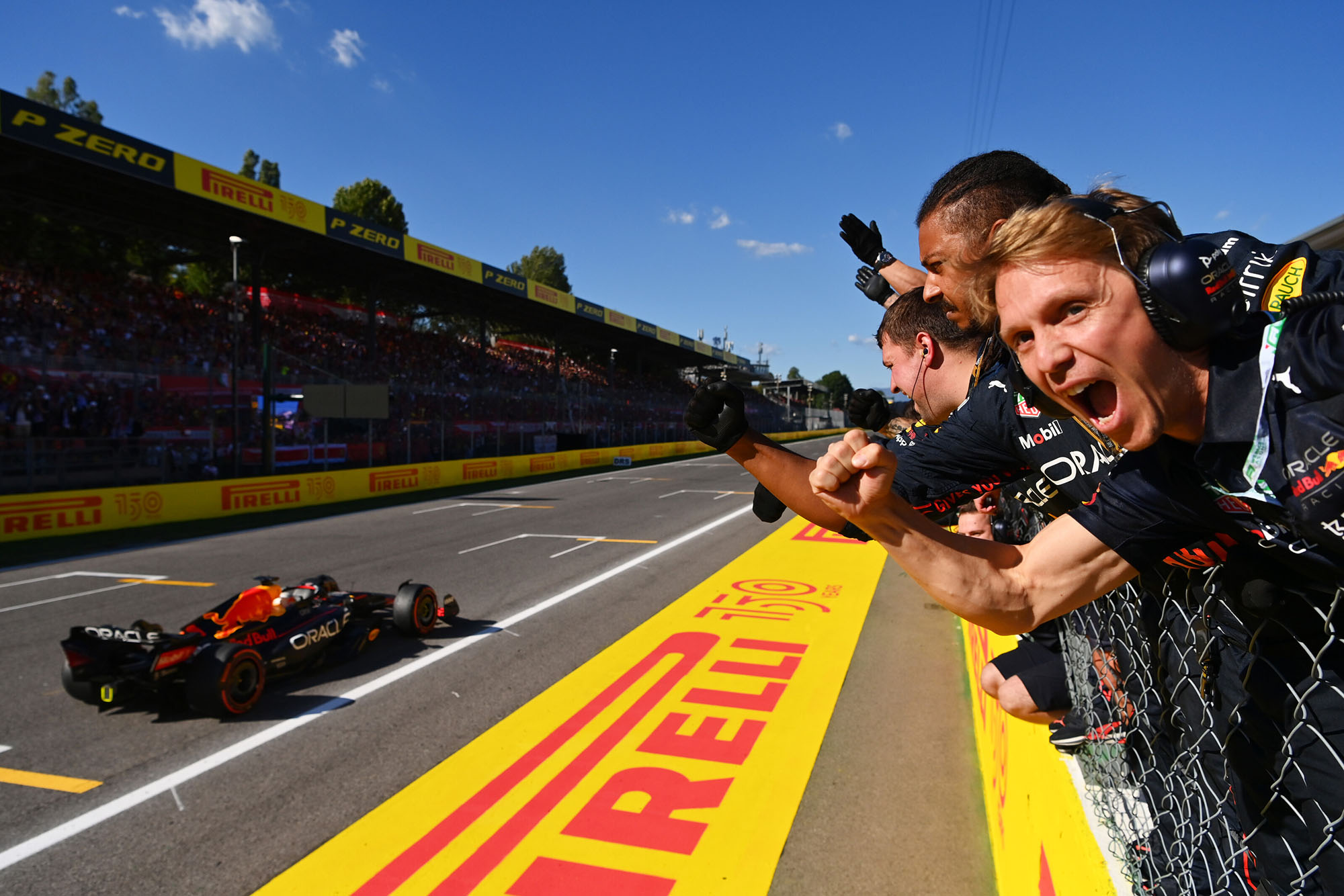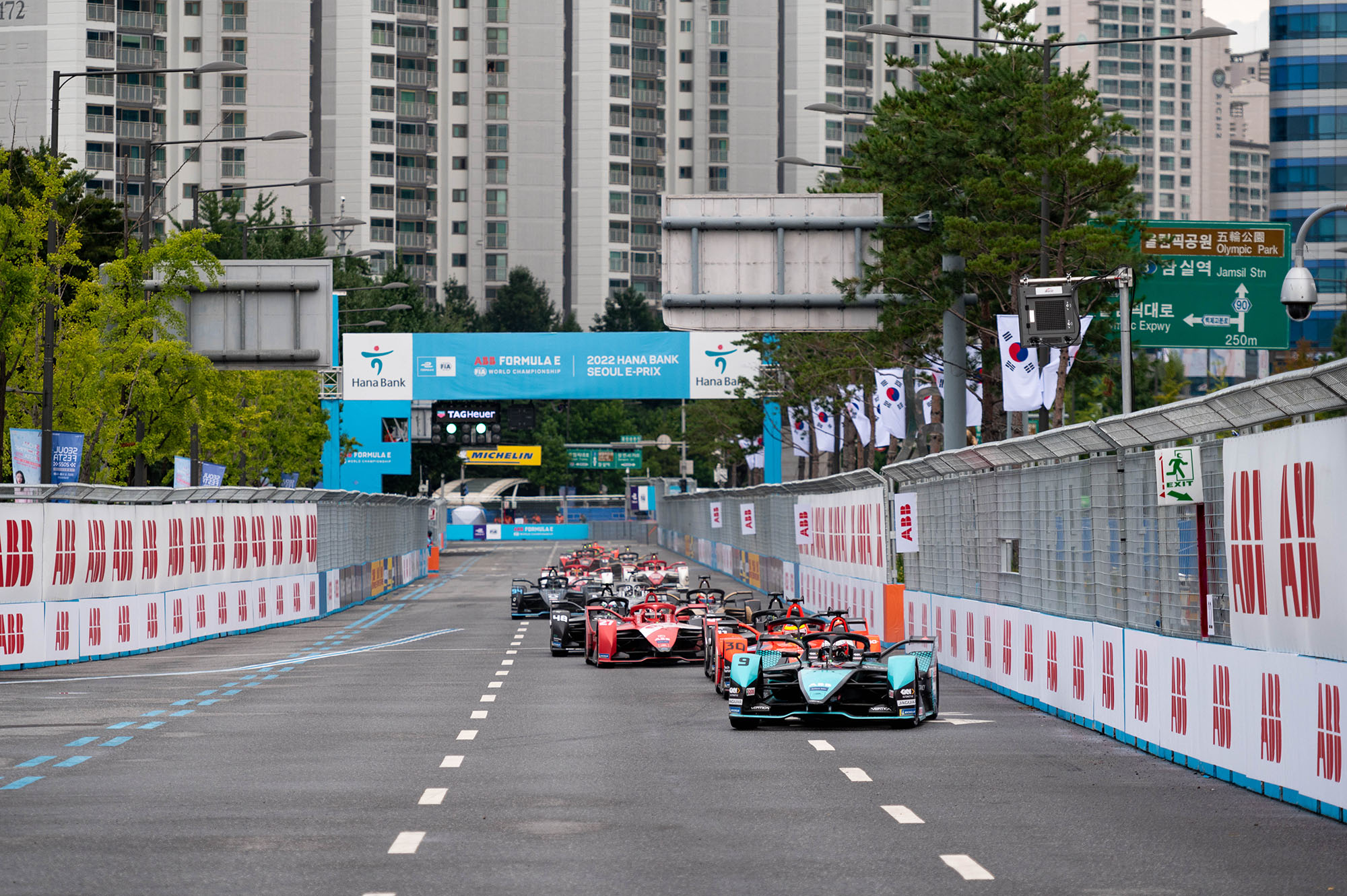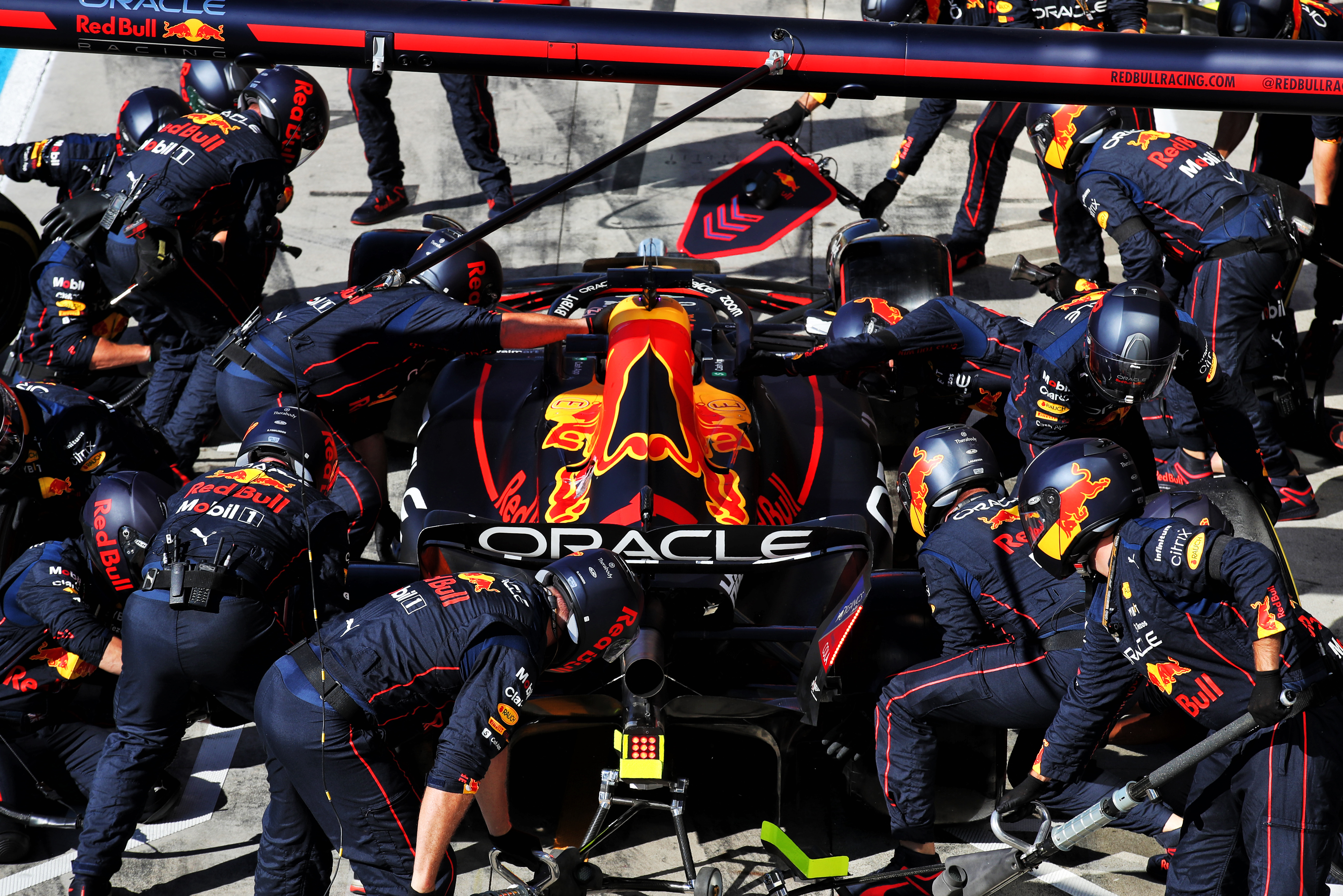Up Next

When Daniel Ricciardo’s McLaren parked on the track edge with eight laps of the Italian Grand Prix to go and lead cars dashed for the pits, a fairly muted Formula 1 race looked set to come alive with a spectacularly tense finish.
Instead Max Verstappen trundled to another victory in the safety car’s wake.
Does Formula 1 need to do more to ensure safety-car finishes are avoided? Or should we just accept them as motorsport reality – and even preferable to what happened in Abu Dhabi last year?
And if a change is needed, what should that change be?
Here are our writers’ thoughts:
Red flag and restart should be used more often
Glenn Freeman

F1 should remain a sport first, and entertainment second. But entertainment has to be a very close second in the modern era, and race finishes under safety car conditions belong in a past era.
The solution is obvious and simple: if a situation arises that requires a safety car within, for example, the last 10 laps of a race, give race control the option to red flag the race to make sure we get a finish under racing conditions.
It doesn’t have to be a hard and fast rule, so if Ricciardo’s McLaren had parked right in front of a gap in the barriers and was going to be easy to move in time, and everyone was confident a quick safety car period would allow it to be taken care of, you stick with that.
But in this case it was clear that Ricciardo was stopped in an awkward position and worryingly close to the end of the race. It should have been a no-brainer to red flag the race and give us a handful of laps of racing to the finish.
I’m sure this won’t be the only entry to mention Abu Dhabi 2021 (sigh), but this solution would have also prevented that nonsense as well. It’s short-sighted that F1 didn’t put something more robust in place last winter.
Late red flags would be totally artificial
Gary Anderson

It doesn’t matter what the FIA would have done at the end of the race, it would have been wrong for someone. Until Ricciardo retired, the race was playing out towards an end result that summarises the season so far.
I think it would be completely artificial to throw a red flag if there is a problem near the end of the race. Yes, a VSC would probably have been sufficient this time but I think the safety car was correct because there was a crane on the track. We all remember Jules Bianchi’s accident and what happens when immovable objects get hit by an F1 car.
Do we need changes in the future? Yes, there are many areas that need a revision.
First of all it can’t be that difficult for the safety car to pick up the leader. Picking up third-placed George Russell must be a bit embarrassing for the FIA.
And one other change is that if a safety car is used in something like the last 10% of the race then lapped cars immediately go behind the unlapped cars. That can start to happen immediately and not after everything else is sorted.
A Formula E rule would solve this
Scott Mitchell

After last year’s Abu Dhabi Grand Prix controversy I advocated this: “Why not have a rule whereby if the safety car is on track with five laps or X% of the grand prix remaining, a red flag is required?”
I’ve never liked the idea that late safety cars can completely swing the outcome of a race. Why should someone be rewarded for being so far behind that they get a free pitstop and tyre change?
I still think that’s valid. But if it’s too complicated for whatever reason, then there’s something I’ve watched with interest being introduced in Formula E over the last year or so that I think F1 could make a variant of.
In FE (and apologies to those already aware of this) there’s an ‘extra time’ rule. For every minute spent behind the safety car or under full course yellow, 45 seconds will be added to the standard race time.
Now, this isn’t directly transferable. There will be differences in how an FE safety car period impacts usable energy, for example, versus the fuel that an F1 car burns even during a caution. It’s possible that the current fuel limits don’t allow it.
But in the British Touring Car Championship, up to three laps behind the safety car can be added to the original duration of the race. Why can’t F1 do the same?
At Monza, 53 laps with 110kg of fuel is around 2kg/lap. So I would like to know emphatically how much can be saved under a safety car and what might be possible in terms of extending the race distance.
And if there’s really no way that the current allowance can be stretched, let’s just increase it. The cars are so, so heavy at the moment as it is, would it hurt if there was an extra 5kg of fuel in at the start? We wouldn’t even notice.
This shows Masi was right about something
Josh Suttill

Michael Masi rightly came under fire for how he handled safety car restarts during his tenure as F1 race director.
He made a lot of mistakes and the decision to remove him from that role was the correct one.
But the new race control regime would be wise to remember a positive competent of Masi’s time in the hot seat – his drive to make sure that races didn’t end under the safety car.
Avoiding them should still be possible within the rules but a Baku 2021-style solution to a race like this would have elevated the spectacle of the grand prix without artificially manufacturing it.
Do things properly and a new rule might not be needed
Matt Beer

After the sprint finish in Baku last year, I praised F1’s new enthusiasm for what I regarded as the rather NASCAR concept of prioritising a finish ‘under green’. And I’m still not offended by what happened in Abu Dhabi six months later either.
But I do see why many were enraged by the fumbling of procedures at Yas Marina, with rules around unlapping only partially followed. And it looks like there might have been an element of mismanagement at Monza.
Could Ricciardo’s McLaren have been cleared in time for a fantastic finish had the safety car picked the field up quicker (and more accurately)? And was there scope for different decisions to get the McLaren out of the way faster? The early post-race rumblings from the paddock suggest that’s the case.
I’m still in favour of F1’s agreed approach being to make sure races finish under green whenever possible and safe. But the starting point for that – before thinking about concrete rules over red flags and restarts within a certain distance of the finish – should be to make sure there are no unnecessary delays in executing the procedures that already exist.






